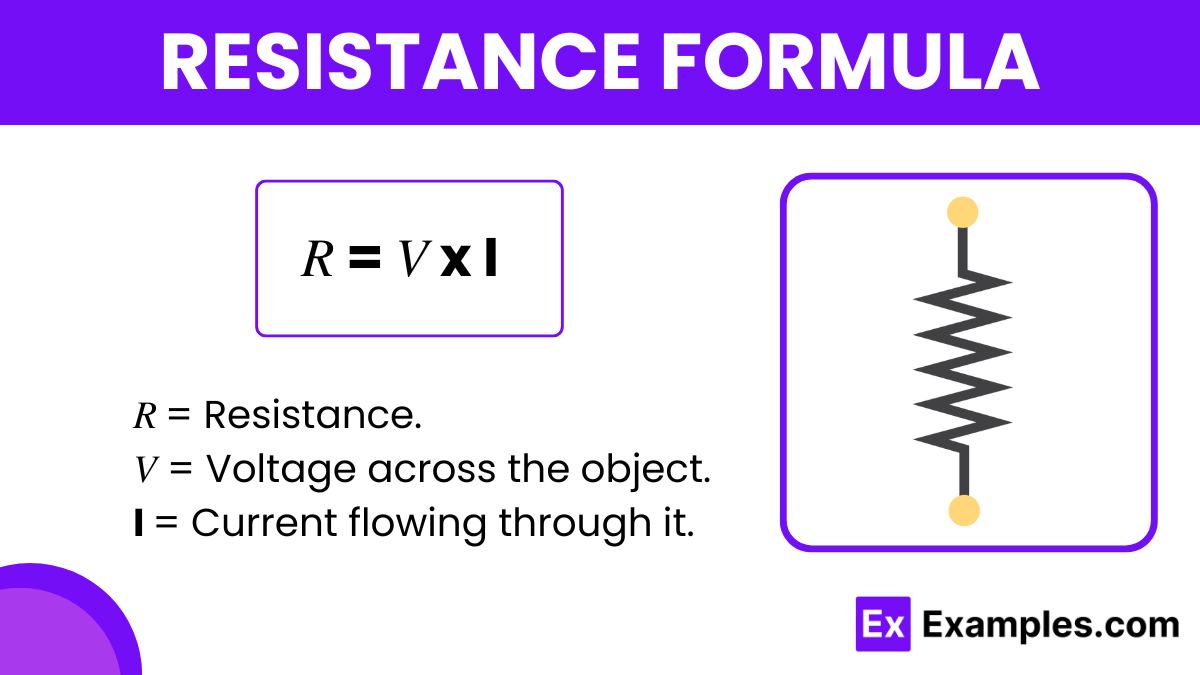What is the formula for resistance in an electrical circuit?
R = V/I
R = I/V
R = VI
R = V + I


The resistance formula is a fundamental concept in physics that quantifies how much an object opposes the flow of electric current. It is defined by the equation
This formula is crucial in determining how different materials affect electrical current flow. Essentially, it tells us that the resistance increases as the voltage increases, provided the current stays constant, and conversely, resistance decreases if the current increases while the voltage remains constant.
The resistance formula was discovered by Georg Ohm, a German physicist, in the 1820s. Ohm’s work was pivotal in understanding electricity, leading to what we now call Ohm’s Law. This formula helped demystify how electrical currents behave in various materials, paving the way for advancements in electrical engineering and technology. Ohm’s Law is not just a theoretical formula but is applied widely in designing electrical circuits, troubleshooting, and teaching fundamental principles of electricity in classrooms around the world.
When connecting resistors in series within a circuit, you add the individual resistances together to find the total or equivalent resistance (𝑅ₜₒₜₐₗ).
The formula for resistors in series is
Conversely, calculating the total resistance of resistors connected in parallel involves a more complex formula. You determine it by using the equation
This equation means that the reciprocal of the total resistance of resistors in parallel is the sum of the reciprocals of each individual resistor’s resistance. This arrangement significantly reduces the overall resistance of the circuit and allows for more current to flow compared to a single resistor of the same value.
The formula for resistivity is expressed as 𝜌 = 𝑅 (𝐴 / 𝐿). Where 𝑅 is resistance, 𝐴 is cross-sectional area, and 𝐿 is length.
The symbol for resistance in electrical circuits is 𝑅.
The formula for resistance is R= V x I , where R is Resistance V is Voltage and I is Current.
Text prompt
Add Tone
10 Examples of Public speaking
20 Examples of Gas lighting
What is the formula for resistance in an electrical circuit?
R = V/I
R = I/V
R = VI
R = V + I
If the voltage across a resistor is 10 V and the current through it is 2 A, what is the resistance?
5 Ω
20 Ω
0.5 Ω
12 Ω
What is the unit of resistance?
Ampere
Volt
Ohm
Coulomb
In the formula R = V/I, what does 'I' represent?
Voltage
Resistance
Current
Power
How does resistance change if the length of a conductor is doubled while keeping other factors constant?
It remains the same
It is halved
It doubles
It quadruples
Which formula represents the relationship between resistance, resistivity (ρ), length (L), and cross-sectional area (A)?
R = ρA/L
R = ρL/A
R = A/ρL
R = L/ρA
If a material has high resistivity, how does this affect its resistance?
Resistance is low
Resistance is high
Resistance is unaffected
Resistance fluctuates
What happens to the resistance of a wire if its temperature increases?
It decreases
It remains constant
It increases
It becomes zero
What is the effect of increasing the cross-sectional area of a conductor on its resistance?
Increases resistance
Decreases resistance
Resistance remains unchanged
Resistance becomes infinite
How is resistance affected when two resistors are connected in series?
It decreases
It remains the same
It increases
It becomes zero
Before you leave, take our quick quiz to enhance your learning!

